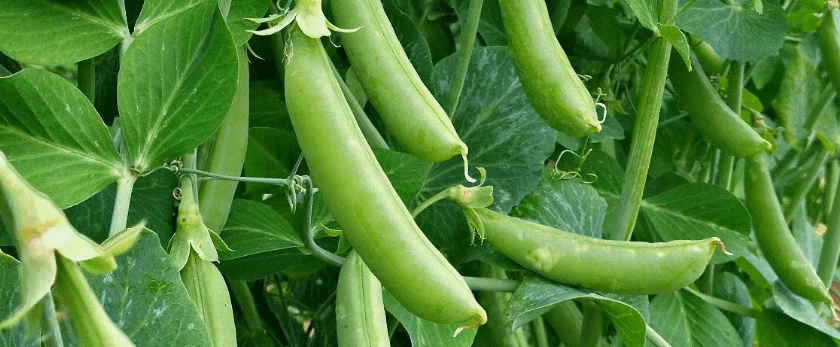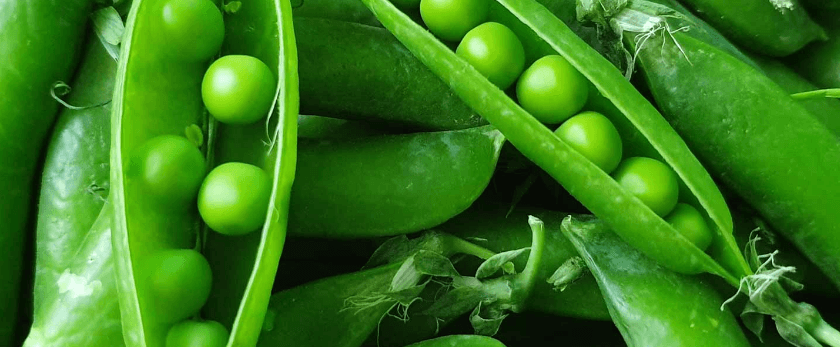Snap peas, also known as sugar snap peas, are a delicious and nutritious addition to any garden. These versatile legumes are easy to grow and can be enjoyed in a variety of dishes, from stir-fries to salads. Not only are they a tasty addition to your meals, but they also have numerous health benefits, including being a good source of fiber, protein, and vitamins A and C.
If you're new to gardening or just looking to add some green to your thumb, growing snap peas is a great place to start. In this article, we'll cover everything you need to know about growing snap peas, from caring for them to common problems and the best time to grow them.
How to Care for Snap Peas
Snap peas are a cool-season crop, meaning they thrive in cooler temperatures and can be planted in early spring or fall. They prefer a sunny location with well-draining soil. Here are some tips for caring for your snap peas:
Watering
Snap peas require consistent moisture to grow, but they don't like to be waterlogged. Water them deeply once a week, making sure the soil is moist but not soggy. If you live in a hot and dry climate, you may need to water them more frequently.
Light
Snap peas prefer full sun, but they can also tolerate partial shade. If you live in a warmer climate, providing some afternoon shade can help prevent the plants from wilting.
Soil
Snap peas prefer well-draining soil with a pH level between 6.0 and 7.0. If your soil is too acidic, you can add lime to raise the pH level. If it's too alkaline, you can add sulfur to lower the pH level. It's also a good idea to add compost or aged manure to the soil before planting to provide the plants with essential nutrients.
Fertilizer
Snap peas are light feeders and don't require much fertilizer. However, if your soil is poor, you can add a balanced fertilizer before planting. Avoid using high-nitrogen fertilizers, as they can promote leaf growth instead of pod production.
Pruning
Snap peas don't require much pruning, but you can pinch off the tips of the plants when they reach about 6 inches tall. This will encourage the plants to branch out and produce more pods. You can also remove any yellow or damaged leaves to keep the plants healthy.

What is the Best Time to Grow Snap Peas?
As mentioned earlier, snap peas are a cool-season crop and can be planted in early spring or fall. The best time to plant them will depend on your location and climate. In general, snap peas can be planted as soon as the soil can be worked in the spring. If you live in a warmer climate, you can also plant them in the fall for a second harvest.
Common Problems with Snap Peas
While snap peas are relatively easy to grow, they can still face some common problems. Here are a few issues you may encounter and how to address them:
Pests
Snap peas can be susceptible to pests such as aphids, thrips, and spider mites. To prevent these pests, keep your garden clean and free of debris, and use natural pest control methods such as neem oil or insecticidal soap. You can also attract beneficial insects, such as ladybugs and lacewings, to your garden to help control pests.
Diseases
Snap peas can also be prone to diseases such as powdery mildew and root rot. To prevent these diseases, make sure your plants have good air circulation and avoid overwatering. If you notice any signs of disease, remove the affected plants and dispose of them properly to prevent the spread.
Nutrient Deficiencies
If your snap peas are not growing well or have yellowing leaves, they may be suffering from nutrient deficiencies. Adding compost or aged manure to the soil can help provide the plants with essential nutrients. You can also use a balanced fertilizer to give them a boost.
Responsible Disposal Methods for a Sustainable Future
As with any gardening, it's important to practice responsible disposal methods to ensure a sustainable future. Here are some tips for disposing of your snap pea plants:
- Compost: If your snap pea plants are healthy and free of diseases, you can compost them to create nutrient-rich soil for your garden.
- Municipal composting: Some cities offer municipal composting programs where you can dispose of your garden waste, including snap pea plants.
- Green waste bin: If your city doesn't have a composting program, you can dispose of your snap pea plants in the green waste bin, where they will be turned into compost.
- Landfill: If your snap pea plants are diseased, it's best to dispose of them in the landfill to prevent the spread of diseases to other plants.
By practicing responsible disposal methods, you can help reduce waste and contribute to a healthier environment.
In Conclusion
Growing snap peas is a rewarding and enjoyable experience. With the right care and attention, you can enjoy a bountiful harvest of these delicious and nutritious legumes. Remember to water them consistently, provide them with enough sunlight, and keep an eye out for pests and diseases. And don't forget to dispose of your plants responsibly to help create a more sustainable future. Happy gardening!










